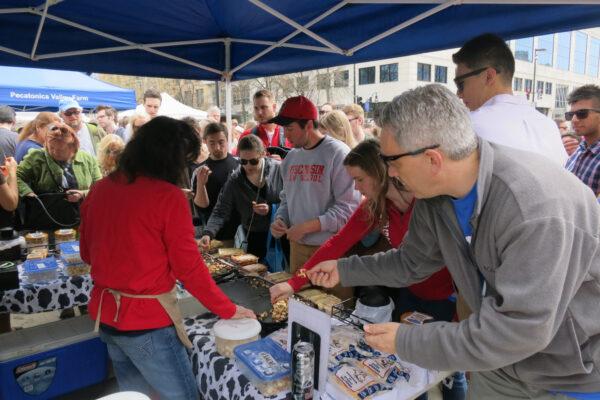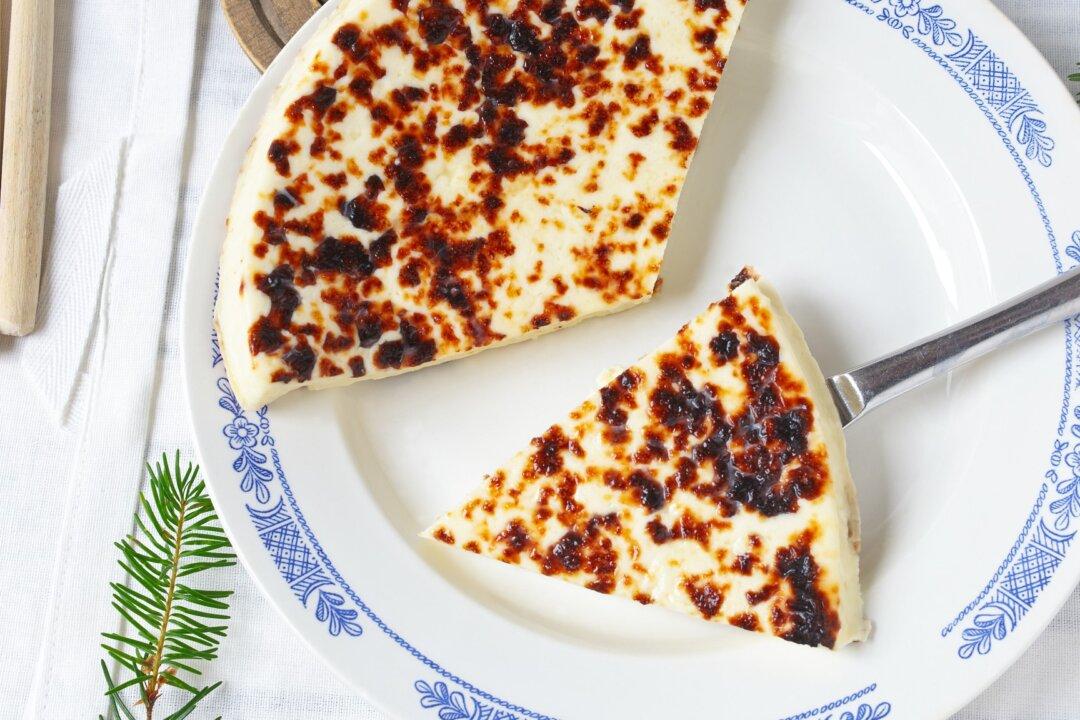At the Dane County Farmers Market around the state Capitol in Madison, Wisconsin, you can find a lot of local cheese, as you can imagine. One of them is a bit of a delicious spectacle: Brunkow Cheese draws a crowd around a large vendor tent, where folks line up, toothpicks in hand, to skewer samples of an unusual Finnish variety of cheese: juustoleipa (pronounced YOO-sto-LAY-pah).

The cheese-stabbing masses huddled around the Brunkow Cheese tent at the Dane County Farmers Market. Kevin Revolinski





